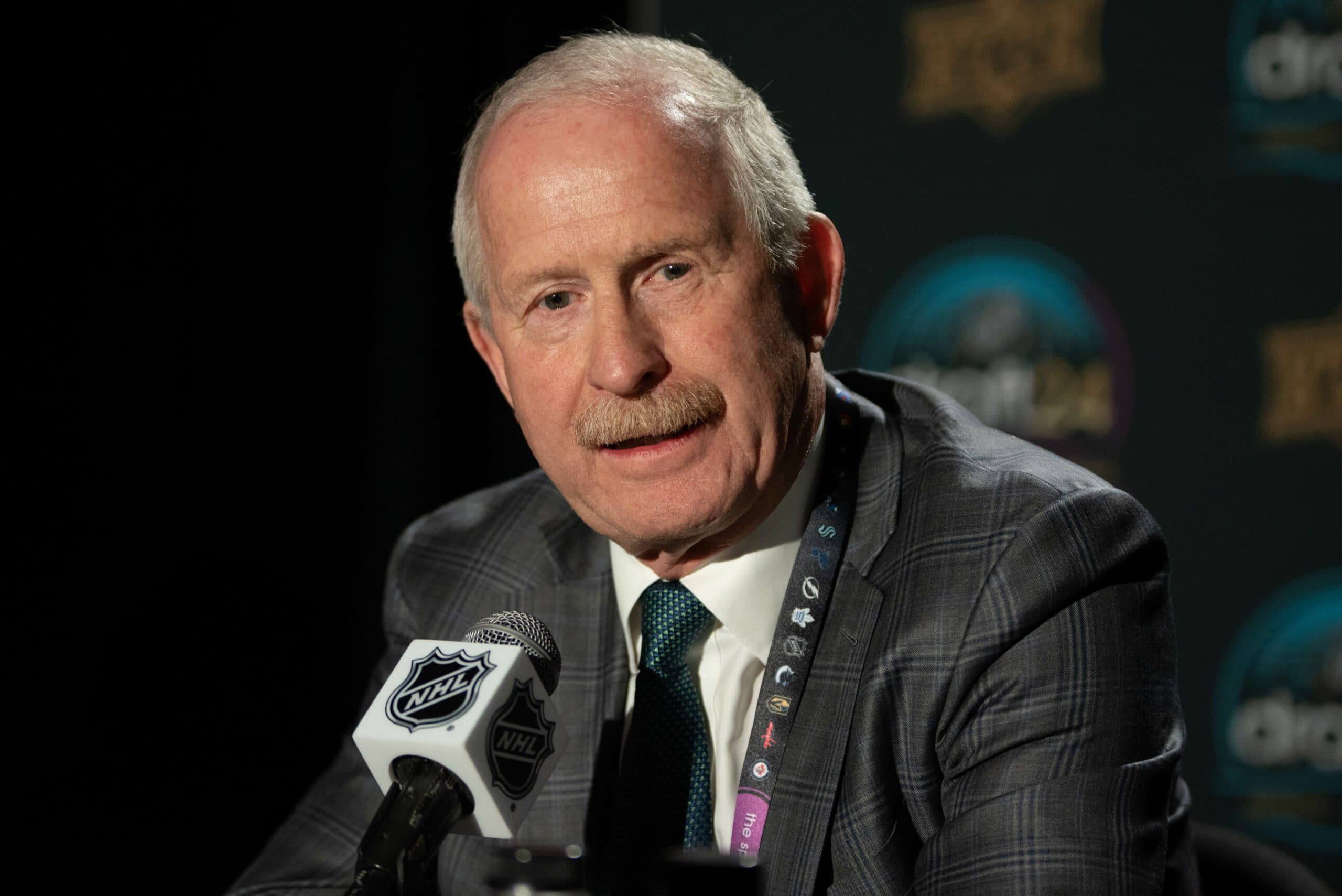Why the 2025 NHL offseason could be the wildest in years

The Edmonton Oilers and Florida Panthers are treating us to what should be an extremely entertaining Stanley Cup Final. Game 1 did not disappoint, a 4-3 overtime thriller in which the Oilers rallied from a 3-1 deficit. But as the 2024-25 NHL season’s two remaining teams battle it out on the surface, the other 30 clubs kick their legs wildly below.
The rumor mill has already begun to churn. We anticipate some iconic players changing addresses. And the 2025 offseason shapes up to be the most dramatic and interesting we’ve seen in many years. Here’s why:
The $7.5 million jump in the salary cap
Historically, shifts in the league’s salary landscape, positive or negative, lead to significant changes in offseason activity. Sometimes, that shift limits spending; nothing will ever top the chaos of summer 2005, when the salary cap was first introduced. It allowed for teams to use compliance buyouts to get down to the $39 million cap, and seemingly half the league’s player population moved around coming out of the lockout. We saw compliance buyouts after the 2012-13 lockout, too, applied in the 2013 and 2014 offseasons. But this time, we’re seeing an unprecedented increase in what teams can spend as the cap rises from $88 million to $95.5 million. The $7.5 million increase is the largest in the history of the cap era and will give some seemingly capped-out teams breathing room to make more additions. The cap is also expected to spike well north of $100 million for 2026-27, so GMs could be more cavalier than ever when handing out multi-year contracts.
“You are going to see teams spending like drunken sailors, and there’s going to be one insane contract after another that’s going to break people’s brains,” one NHL player agent told me this week.
Not only could see some shockingly big AAVs awarded, but the increased cap space should create a fertile trading environment given it’s now $7.5 million easier to be cap compliant.
Multiple teams have TONS of cap space
The jump to $95.5 million plays a role here, but even if the cap had remained flat, we’d have a handful of teams positioned to be serious spenders this summer. Per PuckPedia, the San Jose Sharks and Columbus Blue Jackets have more than $40 million in cap space, with the Anaheim Ducks not far behind, and the Chicago Blackhawks, Carolina Hurricanes, Calgary Flames, Winnipeg Jets, Boston Bruins, Toronto Maple Leafs, Pittsburgh Penguins, Buffalo Sabres, Los Angeles Kings, Detroit Red Wings, New York Islanders and Utah Mammoth have more than $20 million available apiece. We could see some major bidding wars for top free agents, particularly when we factor in recency bias with Stanley Cup Final standouts Sam Bennett and Brad Marchand. And if any of these clubs lose some of their best players to free agency, such as the Leafs with Mitch Marner, they’ll have a war chest of cap space to pursue other UFAs and/or trade targets.
Several contenders have reached the point of desperation
The Leafs, Hurricanes, Jets and Dallas Stars stand out as clubs who have achieved perennial contender status in recent seasons but simply can’t break through and reach a Stanley Cup Final. They can’t keep doing the same things year in and year out. We thus might see their GMs make some reckless decisions. Will the Leafs overpay Bennett? Will the Hurricanes back up the Brinks truck and take a second run at Marner? Will the Jets finally secure a long-term No. 2 center? And what about Dallas, who sits 30th in projected cap space? Will GM Jim Nill have to move a major contract such as Jason Robertson’s to make room for other upgrades?
Mitch Marner shifting the NHL’s power balance
Don’t laugh, Marner haters. This a 102-point player, a multi-time first-team All-Star, almost guaranteed to choose a new team, and no one doubts Marner’s impact during the regular season and on the standings. When you move a piece that dominant elsewhere on the chessboard, what happens? We could put the Pacific Division standings in a blender if he signs with one of its teams, which seems the likeliest result at the moment. And how will his departure affect the Leafs and the Atlantic standings? If you think I’m exaggerating about the league-wide impact of Marner choosing a new team: look what happened in summer 2022, when 100-point scorers Matthew Tkachuk, Johnny Gaudreau and Jonathan Huberdeau found new homes.
The Connor McDavid extension (?)
McDavid is the century’s greatest hockey talent. He’s the most dominant player of the salary-cap era. He took less than his actual market value on his current eight-year contract, which carries a $12.5 million AAV. Particularly if his Oilers check off the bucket list item and win the Stanley Cup this spring…could McDavid blow away the NHL record for AAV and total money on his next deal? The max he could make annually would be 20 percent of the cap, which would be $20.8 million of a projected $104 million cap for 2026-27. An eight-year deal at that figure would amount to $166.4 million. He obviously won’t be taking a max deal, but anything less than $16 million per year would feel like a mild insult. His teammate, great friend and co-legend Leon Draisaitl, raised the bar last season by signing for eight years at a $14 million AAV, which will take up 14.66 percent of a $95.5 million cap in Year 1 next season. McDavid, who wraps up his current deal after the 2025-26 campaign, is eligible to ink an extension beginning July 1.
So if McDavid signs this summer, he’ll be setting a new benchmark for superstar hockey talent – one that could continue rising if the cap continues to explode in the coming seasons.
_____
POST SPONSORED BY bet365
_____